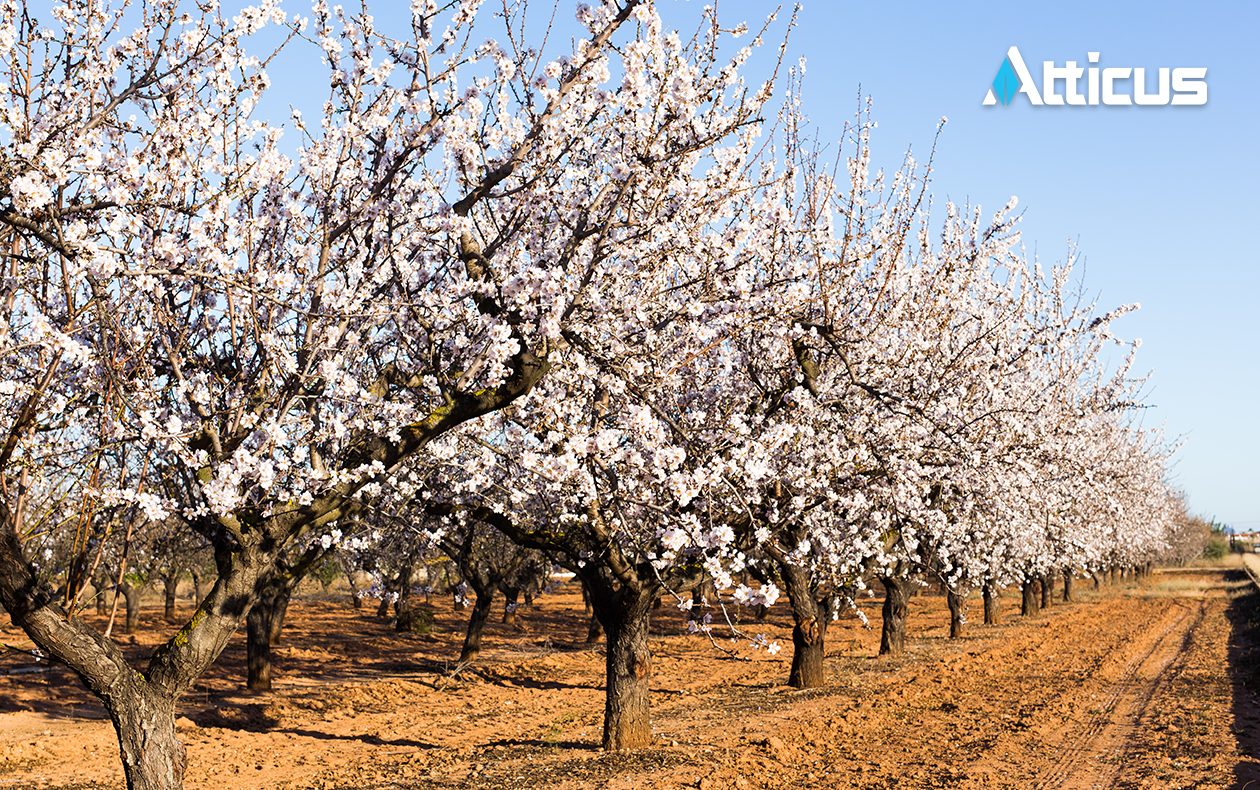Act Now to Prevent Almond Disease Outbreaks This Spring
January 9, 2023

Many key fungal diseases in almonds start in the bloom stage, so proactive planning during dormancy is critical. In preparation for bloom, most growers and pest control advisers return to orchards by early January to spray dormant trees to kill the pathogens and fungal spores remaining on stems and branches.
Growers can protect their harvest from the start and improve tree vigor and productivity by understanding practices that help prevent disease, knowing what diseases to watch for and how to minimize fungicide resistance. Scouting for pathogens, knowing the orchard’s disease history and properly timing management tactics will further help minimize and control disease pressures.
“Effective fungal disease management requires cultural, chemical and mechanical management tactics to promote sustainable, high-quality yields,” said Ruben Escoto, pest control adviser and area business manager, Atticus, LLC.
“Start a game plan now. Neglecting winter care and prevention practices can cause parts of the canopy to wither and die and affects bloom production, which hinders nuts,” he said.
Cultural, chemical and mechanical practices to prevent disease
“Fungicide treatment is the most important control strategy of almond diseases, but it must be coupled with cultural and mechanical practices to achieve the most comprehensive control,” said Escoto. Cultural practice includes those that allow for more air movement, irrigation management and pruning. Mechanical practice is the removal of diseased wood from the orchard to reduce the amount of inoculum present.
- Prune out the centers of the trees to promote airflow and reduce humidity, which causes fungus. Pruning and shaping trees is essential and can affect production quantity, quality and ease of harvesting and other farming activities. Almond trees should be pruned in the first year and every subsequent year to help thin the canopy and prevent disease.
- Mulch mummy nuts to reduce aflatoxin. Nuts remaining on almond trees after harvest work as a host for unwanted overwintering insect pests. Shake or manually knock down the nuts and mulch them up to remove the pests before bloom.
- Irrigate to the best practices available to reduce over-irrigation, which leads to phytophthora, root rot and hole rot. Use low angle nozzles to prevent the tree canopy from being wetted by the sprinklers and reducing disease spread.
Scouting for disease
In a typical year, brown rot blossom blight is the most prominent disease at bloom. Risk of infection is determined by environmental conditions, such as temperature and wetness, and the disease is uncharacteristically favored by rainfall but can thrive in years of low rainfall.
“Brown rot disease spores are airborne and spread by wind or wind-driven rain, conditions that commonly occur each year during bloom,” Escoto said. “Once established in an orchard, the disease is difficult to remove using pruning practices alone. So, prevention is really the best way to manage the disease.”
- Signs and symptoms of infection: Brown rot can infect all parts of the flower: stigma, anthers, pistils and petals. Although flowers are most susceptible when fully open, they can become infected anytime from pink bud to petal fall. Once infected, trees will exhibit blighted or rotting flowers. And because the brown rot pathogen can move beyond the flower into young shoots and twigs, growers may also find cankers.
- Prevention and management: Treat at pink bud, 5-10% bloom, and again at 80-100% bloom. In most years, one fungicide application at 80-100% bloom is sufficient in most orchards if there is low rainfall. But if brown rot has been severe, or in years of extended bloom accompanied by rainfall, a second and sometimes even a third application near full bloom may be necessary.
“For early season, root-to-leaf protection of soil-borne diseases, a systemic fungicide like the new Recon™ Bold SL will help protect quality and yields,” said Escoto.
Another disease to watch for and manage from early in the season is anthracnose, which can be severe in warm, wet springtime conditions.
- Signs and symptoms of infection: Infected flowers look like brown rot strikes. Growers should scout for leaves on infected spurs that have developed marginal necrosis, beginning with water-soaked areas that fade in color. Dead leaves will remain attached to branches.
- Prevention and management: In orchards that have a history of anthracnose, apply fungicide sprays beginning at pink bud, 5-10% bloom, and repeat every 10 to 14 days if rains persist. Late spring rains may require additional applications in May.
At 80-100% bloom, growers should scout for green tissues diseases like Alternaria, rust and scab, which typically appear in late spring to early summer.
Minimizing resistance
Resistance management programs are critical to a fungicide’s long-term efficacy. Using too many fungicides with the same mode of action must be avoided.
“Farmers can use a different mode of action for each application, if listed on the label —each one followed by the other. Or they can apply a block of fungicides with the same mode of action and then rotate to a different mode of action and change again,” said Escoto. “Using different modes of action also helps manage resistance build up. Always read and follow label instructions.”
Growers can work with a trusted pest control adviser to make sure they’re alternating FRAC groups and applying the right fungicides at the right rates to prevent resistance from developing.